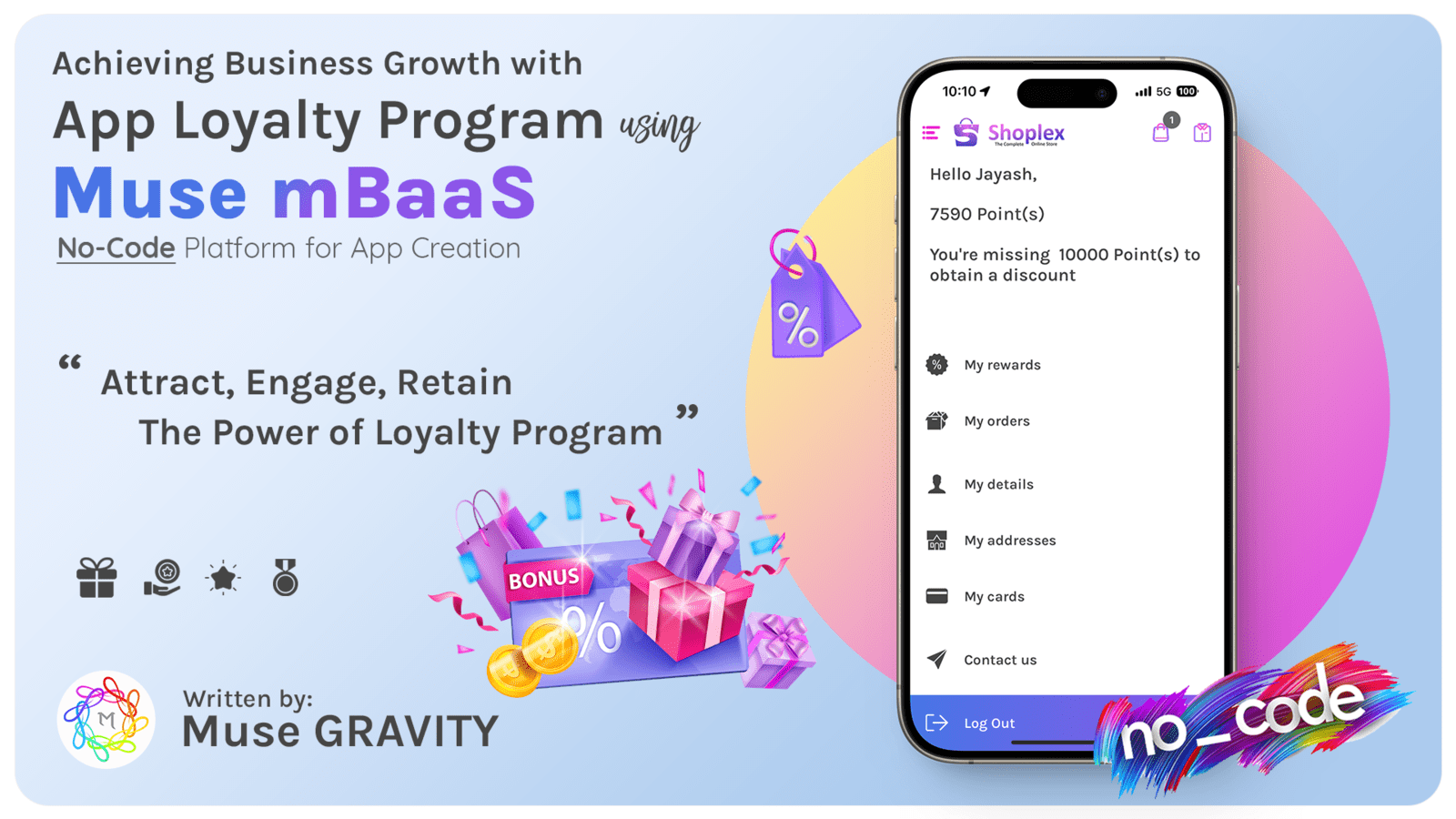
Introduction to Mobile App Loyalty Programs
The Importance of Loyalty Programs in Today's Mobile-First World
How the Loyalty Program works:
1. Earning Points :
- Accumulation of Points: Customers earn points for spending money within the app. As shown, for every $1.00 spent, the customer receives 10 points. This incentivizes purchases, encouraging customers to spend more within the app to accumulate points.
2. Points Expiry and Notifications:
- Validity: Points have a validity period, which is set to expire after one month, six months, one year, or the time period you have selected according to you. This creates a sense of urgency for customers to use their points before they expire.
- Reminders: To help customers track their points and expiration, the system can send automated reminder emails at specified intervals before the expiration date, such as two months and two weeks prior.
3. Redemption of Points:
- Threshold for Rewards: Customers can redeem their points once they reach a certain threshold. For example, a customer must accumulate 10,000 points to generate a coupon.
- Reward Structure: The loyalty program offers the flexibility to define the type of discount the coupon will carry, either a fixed amount or a percentage off the total order.
4. Coupon Generation and Use:
- Code Prefix: When a coupon is generated, it comes with a specific code prefix, making it easily identifiable as part of the loyalty program (e.g., 'LOY-').
- Customization: The program allows the business to customize the name of the reward, like the "Loyalty Gift Card", which is visible only to the business or a company, ensuring internal clarity.
5. Terms and Conditions:
- Redemption Rules: The business can set specific terms for using the coupons, such as a minimum order amount or a minimum quantity of products that must be purchased to apply the coupon.
6. Expiration of Rewards:
- Time-Bound Incentives: The expiration date for each reward can be set, which encourages users to make use of their rewards within a given timeframe. This feature can also be turned off if desired, offering more flexibility to the business and its customers.
7. Overall Program Management:
- Simplicity and Control: The entire loyalty program can be managed with ease through the backend, allowing for adjustments to points earned per dollar, the point expiry period, and the reward redemption conditions, all tailored to the business's strategy.
The loyalty program is designed to be a robust system that not only rewards customers for their patronage but also provides the business with tools to manage customer retention effectively. The user interface for managing the program should appear user-friendly and straightforward, ensuring that businesses or companies can adapt and scale their loyalty programs as needed.
Designing an Effective Mobile App Loyalty Program
Key Features of Successful Mobile App Loyalty Programs
1. Simple Enrollment:
Easy sign-up process with minimal steps to encourage user participation.
2. Clear Value Proposition:
Transparent benefits and rewards that are easy for users to understand and perceive as valuable.
3. Flexibility and Choice:
Giving users the option to choose their rewards from multiple alternatives.
4. Regular Communication:
Timely notifications and reminders about point balances, upcoming rewards, and special promotions.
5. Mobile Optimization:
A loyalty program that is fully optimized for mobile usage, with an intuitive interface and responsive design.
6. Data-Driven Insights:
Utilizing user data to continually refine and enhance the program.
7. Robust Security:
Protecting user data and transactions to maintain trust and program integrity.
8. Customer Support:
Easy access to support for any issues related to the loyalty program.
9. Scalability:
The ability to scale the program as the business and user base grow.
10. Feedback Mechanisms:
Channels for users to provide feedback on their experiences, which can be used to improve the program.
These features, when executed well, can contribute to the success of a mobile app's loyalty program by enhancing user engagement, fostering loyalty, and ultimately driving increased business revenue.
Case Studies: Successful Loyalty Programs in Mobile Applications
Examining successful case studies can provide insightful lessons in the realm of mobile app loyalty programs. A prime example is the Starbucks mobile app, which seamlessly combines convenience with rewarding customer loyalty, leading to increased customer retention and sales. These real-world examples serve as a testament to the effectiveness of well-implemented loyalty programs in fostering customer engagement and loyalty.
Challenges and Solutions in Implementing Mobile App Loyalty Programs
While implementing loyalty programs in mobile apps can be highly beneficial, it's not without its challenges. These include ensuring the privacy and security of user data, balancing rewarding mechanisms with profitability, and maintaining user interest over time. Overcoming these challenges involves:
- Adopting secure data practices.
- Leveraging analytics for personalized offers.
- Continuously innovating the loyalty program to keep it relevant and engaging.
Challenges and Solutions in Implementing Mobile App Loyalty Programs
Future Trends: Loyalty Programs in Mobile App Development
Looking ahead, the evolution of loyalty programs in mobile apps will likely be influenced by technological advancements such as artificial intelligence (AI), machine learning, and augmented reality (AR). These technologies could offer more personalized and immersive user experiences, predictive analytics for understanding user behavior, and innovative ways for businesses to reward loyalty.
Enhancing Mobile App Engagement with Muse mBaaS's Integrated Loyalty Program Solutions
Conclusion:
In the ever-evolving world of mobile commerce, loyalty programs have established themselves as the cornerstone of customer engagement and retention strategies. They are not just a value-add but a definitive component that can set a mobile application apart in a crowded marketplace. As we've seen, the effectiveness of these programs is largely dependent on their design and execution, which must be user-centric, data-informed, and adaptable to the changing needs and behaviors of customers.
Muse mBaaS emerges as a pioneering platform, bridging the gap between the complex technology requirements of mobile app development and the strategic implementation of loyalty programs. Its no-code environment, combined with AI-driven design, empowers businesses to deploy sophisticated loyalty programs that are not only aligned with their brand's ethos but are also primed to enhance user engagement and drive growth.
In conclusion, as we look to the future of mobile applications, it is evident that loyalty programs will continue to play a pivotal role. Platforms like Muse mBaaS are leading the charge by providing businesses with the tools they need to create seamless, engaging, and profitable mobile experiences. By leveraging such innovative technologies, companies can look forward to building stronger, more enduring relationships with their customers, ensuring loyalty and success in the digital age.
No Credit Card Required
















